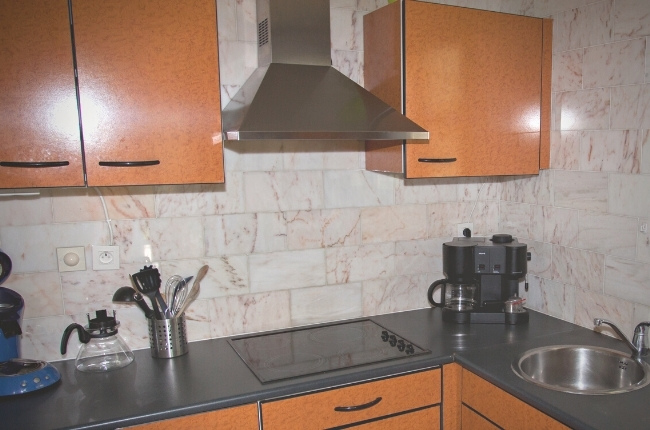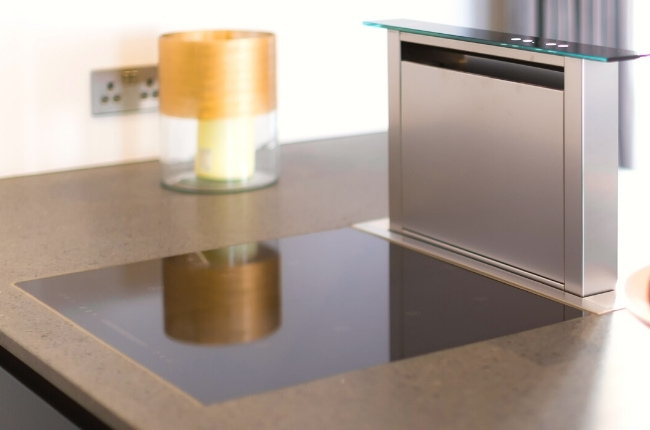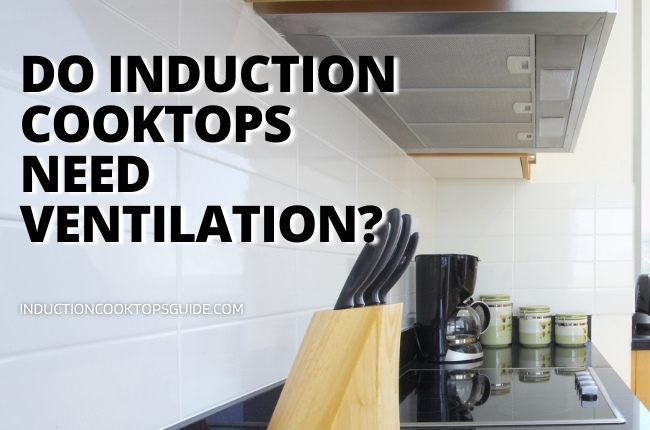Steam, smoke, and residual heat are part of the daily cooking experience when you’re making a meal at home.
Because of the efficiency of an induction cooktop, it minimizes these elements – which is one of the reasons why many home cooks don’t regret upgrading to one!
But just because it minimizes the discomforts of cooking doesn’t mean they’re eliminated. So for your and your family’s safety, do induction cooktops need ventilation?
To help you avoid mistakes in installing a faulty unit, this article will explore the ventilation requirements of an induction cooktop.
If you want to know more about the types of ventilation available, read more below.
Does an induction cooktop need a vent?
If you’ve had the chance to cook on an induction stovetop, you know it can heat your food faster than other types of stoves. Its speed and efficiency are due to its technology, which enables the pan to directly absorb up to 90% of its heat.
This results in less heat leaking into the rest of the kitchen and no gas fumes – which leads to the common misconception that you don’t need ventilation with an induction cooktop.
So to debunk this concept, does an induction cooktop need ventilation?
The short answer is yes; you still need some type of ventilation for an induction cooktop since steam, smoke, and smell from certain foods will still be able to spread around your house.
Built-in units also need a ventilation system under the counter or cabinets to prevent overheating since the unit generates heat.
That’s why you have to make sure there won’t be anything blocking the air from circulating.
How much ventilation does an induction cooktop need?
If your induction cooktop is against a wall, the Home Ventilating Institute recommends you give it 40 to 100 cubic feet per minute (CFM) of airflow per foot of your cooktop. If you have an island cooktop, you will need 50 to 150 CFM per linear foot of its width.
For built-in cooktops, you can read the manufacturer’s manual for the correct ventilation system your brand of cooktop needs.
More affordable brands can only tolerate temperatures up to 90°F (32°C), so you’ll need to install an additional ventilation fan. But there are also good quality units with better ventilation, so you won’t need to add an extra fan.
But the general rule is that the total surface area of your space should have the same surface area of your unit’s intake and exhaust vent.
You can also use this handy calculator tool from Hatco to help determine how hot a cabinet can get so you can install the proper kitchen ventilation for your cooktop.
Do induction cooktops need special range hood?

Range hoods can sometimes get bulky and out of place in your kitchen, so it’s pretty easy to understand if you want to skip installing one.
But considering you still need functional ventilation in place, do you need a vent hood with an induction cooktop, or is it just an additional expense?
Induction cooktops may not emit as much heat as other types of stoves, but you’ll still need a range hood to get rid of smoke, grease, and odors.
Induction users find that without one, grease can easily accumulate on the top of your cabinet walls, and strong smells can linger on your clothes and linens.
But to get adequate ventilation, you need to pay attention to specific features of the range hood you’ll pick, like its capture area, distance, and shape.
Induction cooktop ventilation requirements
If you gravitate towards a built-in induction cooktop for your kitchen because of its sleek and seamless design, a good ventilation system will help prolong its lifespan.
But if you’re confused about its requirements, here’s a quick guide on what you’ll need:
Induction cooktop cabinet ventilation
As discussed above, built-in induction cooktops come with a ventilation fan to prevent your unit from overheating.
This fan can generate a bit of heat if you’re using your cooktop for an extended period of time. So to prevent this heat from accumulating, you need to have a vent that allows this heat to circulate.
But the requirements for proper ventilation will vary depending on the brand and model of your cooktop, and you’ll usually see the specifications in the installation manual.
For instance, Gaggenau requires you to provide space for an air duct with a minimum of 13/16 inches of open cross-section across the width and height of the cabinet.
Cutting out a recess of a minimum of 1 ¾ inch in height will also help with air intake while placing an intermediate shelf below the cooktop can help prevent the cabinet’s drawers from heating up.
On the other hand, a Fisher & Paykel induction cooktop may require slightly different dimensions, such as a minimum of 13/16 inches of clearance from the wall and at least 4 ⅛ inches of space between the bottom of the cooktop and the top of the drawer.
Downdraft vent for induction cooktop

If you’re not on board with the idea of installing a clunky rangehood on an island cooktop, a downdraft vent will be an excellent alternative.
They work similarly to an overhead rangehood, but instead of being visible, they can quickly retract into the island when not in use.
Similar to other types of vents, the requirements and dimensions will vary according to the brand and model of your downdraft vent – so it’s best to look through the installation guide of your unit. For instance, here’s a detailed manual on how to install a Thermador downdraft vent.
You’ll typically need to place ducts inside your island, so you must let go of a few cabinets to create sufficient space.
But if storage is crucial in your kitchen, there are specific dimensions you’ll need to follow to fit your vent correctly.
Is there a ventless induction cooktop?
Going ventless won’t be ideal for any type of cooktop, much less for induction.
But if you want to save space in your kitchen, many brands offer cooktops with integrated vents, like the Bosch PVQ731F15E unit. Instead of having an overhead hood or separate downdraft vent, having a built-in vent will be more convenient.
Granted, you’ll have less space for burners, but having the vent within close proximity to your pots and pans will ensure all of the smoke, steam, grease, and odors will suck into it.
But if you’re worried about spilling food into the vent, cleanup is easy because you can remove the filter and catch trays to wash them off.
Can you put a drawer under an induction cooktop?
If you have limited storage in your kitchen, installing a drawer under your induction cooktop will be a great way to optimize your space.
But before you start your renovation, you must ensure that your cooktop has enough clearance space for ventilation.
You can find the required measurements in the installation manual for your cooktop, but Wolf recommends you give it at least 2 inches of clearance.
This drawer can get warm whenever you use your cooktop, but it won’t get too hot that the objects inside will interfere with your unit’s function.
So storing cookware and utensils will be safe if you have enough ventilation clearance.
Can you put a microwave over an induction cooktop?
Having a microwave in your kitchen can be convenient for heating food quickly. But if you want to install it above your induction cooktop to save space, you might damage it instead since it will be too close to its surface.
Even if you’re microwave has built-in ventilation, it won’t have enough power to vent a high-power induction cooktop. Plus, it will be more difficult to operate since it’s positioned too high.
But if you’re short on space, you can install your microwave below your cooktop, as long as you give it enough clearance to allow sufficient ventilation.
Can you put an oven under an induction cooktop?
If baking cakes and cookies are part of your specialty, an oven is an indispensable appliance in your kitchen. But if you have limited wall space, placing it under an induction cooktop would be a clever way to maximize your space.
One downside that induction users find is that the oven is too low on the counter since you need to provide enough clearance between your induction cooktop.
If you open the door of the oven, the handle will probably touch the floor. So if that’s a dealbreaker, consider getting an induction range instead.
Final thoughts
Even if an induction stove emits less heat because of its efficiency, you’ll still need to install proper ventilation because of steam, smoke, grease, and odors that will arise from cooking.
If you don’t want to install a bulky range hood over your cooktop, a downdraft vent or integrated vent will keep your kitchen sleek. They won’t function as well as a traditional hood, but they will do the job.
But because you’ll need to follow specific requirements when installing your vents, getting a professional installer is always a good idea. Installation manuals may be provided with your cooktop, but applying the correct installation procedures will get you the best results.

Leave a Reply